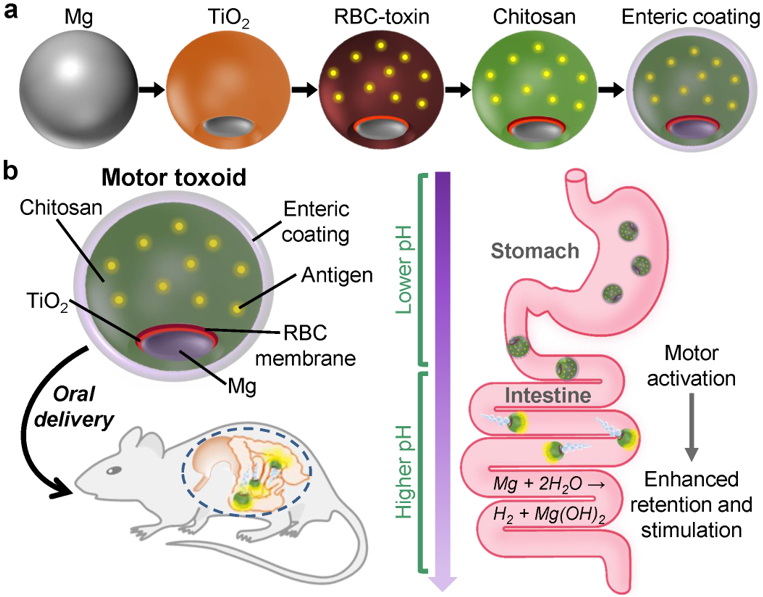Figure 1.

Schematic of micromotor toxoids for oral vaccination. (a) Motor toxoids are fabricated by a sequential process in which magnesium (Mg) microparticles are coated with an asymmetrical layer of TiO2, followed by toxin-inserted RBC membrane (RBC-toxin) as the antigenic material, mucoadhesive chitosan, and a pH-sensitive enteric coating. (b) When administered orally to mice, motor toxoids first enter the stomach, where the enteric coating protects the formulation from degradation in the low pH environment. Upon encountering the more neutral pH of the intestines, the enteric coating dissolves and the intestinal fluid activates the motors. The autonomous propulsion of the motors facilitates enhanced retention and penetration in the intestinal wall, enhancing immune stimulation against the antigen payload.
